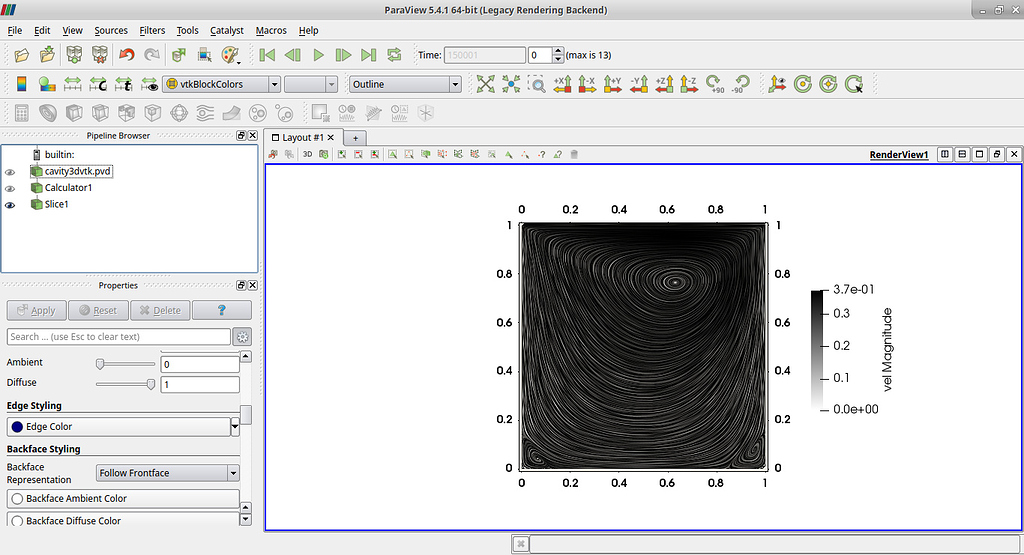
ParaView always remains connected to a server (builtin by default).

Separate vector into components paraview how to#
How to write radically different applications based on ParaView? Additional examples are available under ParaViewSourceDir/CustomApplications Look under ParaViewSourceDir/Applications/ParaView. ParaView application itself serves as an example of this framework. Of course, custom applications can use plugins to add new features required by them. totally customize the menus, get rid of the pipeline browser, change the pipeline centric user interface etc., then you should look into creating a custom application. If what you need is change the way ParaView as an application works, i.e. you can add functionality to ParaView using plugins, never remove or qualify existing behavior i.e you cannot change what happens when user clicks "File-Open" in ParaView using plugins, however, you can add support for a new reader that becomes available for the user in the File-Open dialog. Note that plugins are only "additive" i.e. without changing the application level behavior of ParaView, plugins are the easiest. When adding functionality to ParaView eg. Facilitate creation of ParaView-variants that use most of ParaView functionality with minor behavioral or user-interface changes.Īll such custom applications created using this framework will be referred to as ParaView-brands in this document.ĭo I need a Custom App, or merely a Plugin?.Facilitate creation of applications radically different from ParaView, with totally different workflows.The main goals we set out to address are: To address these issues, we re-structured the application layer in Paraview. Also it was hard to create domain specific ParaView-clones with limited user interface components, since various components have cross dependencies among each other and it becomes hard to ensure that all signals/slots are connected correctly for them to work. The infamous pqMainWindowCore ended up being copy-pasted for every application and then tweaked and modified breaking every possible rule for good programming practices. In spite of best of our intentions we soon realized that it was not very easy to create applications that use ParaView core without subscribing to an user interface identical to ParaView's. This document describes how to create Qt-based custom visualization applications using ParaView's Parallel Visualization framework.Īpplications based on ParaView have grown since the release of ParaView 3.0.
Separate vector into components paraview mac#
5.5.3 Special Case: Mac DragNDrop App bundles.5.5.2 Special Case: Linux Packages and RPATH.

5.4 Application Initialization Sequence.5.3.4 ParaViewSources : Sources Menu Configuration.5.3.3 ParaViewFilters : Filters Menu Configuration.5.3.2 ParaViewWriters:Writer Factory Configuration.5.3.1 ParaViewReaders: Reader Factory Configuration.4 How to write radically different applications based on ParaView?.2 Do I need a Custom App, or merely a Plugin?.


 0 kommentar(er)
0 kommentar(er)
